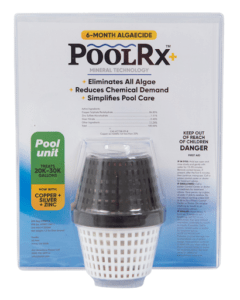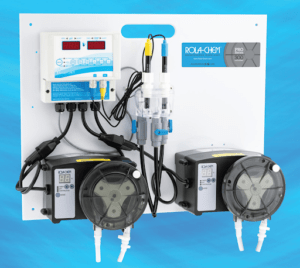On August 20, 2020, a facility that provided over 60% of the stabilized chlorine in the USA annually caught on fire. This led to a surge of demand for other forms of chlorine along with shortages never seen before.
This shortage taught all of us in the pool and spa professional industry just how much consumers relied on chlorine to care for their pools—and highlighted the need for product alternatives when that chlorine consumer demand can’t be met.
Here are some of the expected outcomes caused by the chlorine shortage, and ways you can address it in 2022.
Between high demand and material availability, we have seen multiple price increases across every channel in our industry. Does this mean that the cost of chlorine is going to keep rising?
Unfortunately, yes. We expect chlorine costs to continue to rise next year.
You can alleviate some of these costs for your customers by informing them on how to lower chlorine demand. This will lessen the amount of chlorine used, and make chlorine last longer.
Chlorine demand is a term we use to describe how much chlorine a body of water will use over a period of time. We introduce chlorine or sanitizers to the water to keep it clear, safe and comfortable.
Understanding what causes chlorine demand is the first step in addressing the overuse of chlorine. With that said, a pool is under constant assault from contaminants. Pollen, leaves, fertilizer, body lotions, and cosmetics are just a few substances that can get into the water causing the chlorine demand to rise. Removing these contaminants from the body of water lowers the amount of chlorine needed to maintain a clear and safe pool or spa.
That’s why using enzymes like GLB’s Natural Clear is common practice. Enzymes break down organic waste, suntan lotions, cosmetics, dead algae, and pollen by accelerating the decay process and converting the organic matter to carbon dioxide. Utilizing enzymes not only lowers chlorine demand, but it acts as a natural cleaner for a pool’s tile line and filter.

And let’s not forget about GLB Exhilarator Water Conditioner, which is a borate product. Borate disrupts cell wall development, metabolism, and cell division. So using borates is a good way to prevent algae (algaestat- ic) rather than killing algae (algicidal). You will need and use less chlorine and therefore have a lower chlorine demand when using borates because you are preventing algae.
Borates also reduce the amount of acid you use by buffering the pH of the body of water. When using borates, the pH of the water is more resistant to increase. This makes it an ideal product to use in salt pools and liquid chlorine applications.
Testing chlorine and pH is important, even when there isn’t a chlorine shortage.
Did you know that chlorine is more effective when pH is on the lower end of the acceptable range? By testing both chlorine and pH levels on a regular basis, you can ensure you’re getting the most out of chlorine while you keep track of just how much chlorine you’re using in the pools you service. This, again, will help alleviate those rising costs of chlorine next year. Utilizing Aquachek Silver 7 test strips is a great way to quickly and easily check your chemical ranges and save time! Aquachek has a wide range of accurate, reliable and easy-to-use testing equipment for every service professional.

Liquid chlorine is unstabilized, which means it is sensitive to sunlight. Instead of adding all the chlorine in the beginning
of the week, letting the sun burn most of it off, the Rola-Chem units add small amounts throughout the day, keeping chlorine levels lower while using less. The chlorine is stored in specialized containers, protecting it from harmful rays.
The 2021 season had a lot of challenges for the pool and spa industry. Sourcing Trichlor and Liquid chlorine was one of those challenges.
There are a lot of commercial pools and spas that could have benefited from a Cal Hypo (Calcium Hypochlorite) sanitation system like CCH.
With CCH Elite and Endurance feeders, not only did we keep all of our commercial accounts open, but those accounts saved and made more money using these feeders through the shortage. The CCH Cal Hypo system helps protect the plaster and equipment, and provides softer and clearer water—while not increasing the CYA of the pool!
Let’s not forget about the current drought situation. With the CCH systems, you don’t have to drain the water due to high CYA or TDS. In fact, as the calcium increases in the body of water, we adjust the pH and alkalinity differently, causing the calcium to stay in solution and not sticking to a pool’s tile line.
Technology has come a long way, and so have pool sanitizers. When looking at chlorine and chemical-free options, the answer isn’t always either/or. By combining the best available technologies, every pool can be crystal clear and absolutely safe.
Some of the most dangerous pool contaminants are resistant to chlorine and other chemicals. Harmful organisms like Cryptosporidium require long-term exposure to high chlorine levels to be destroyed. AOP, Ozone and UVC oxidize or inactivate these types of contaminants for a safer pool in a fraction of the time.
Since the CMP’s AOP, Ozone or UVC work so quickly on pool removing or destroying contaminants, chlorine is free to work better. This reduces chemical demand and greatly reduces the amount of chemicals that need to be added to the water. Every pool can experience a reduction in chemicals and a reduction in annual chemical costs with the addition of AOP, Ozone or UVC.
AOP, Ozone and UV can destroy or inactivate dangerous contaminants that can be present in any backyard pool. These Advance Sanitizers are effective against microorganisms like Cryptosporidium, viruses, bacteria and other pathogens while being unaffected by CYA.
Any other questions or concerns about the chlorine shortage? Reach out to us at Alpha West. If your current distributor is out of chlorine, we can help you find chlorine alternatives quickly to keep your pool business in operation.
Aliso Viejo, CA 92656
hello@alphawest.com
(818)-519-6195